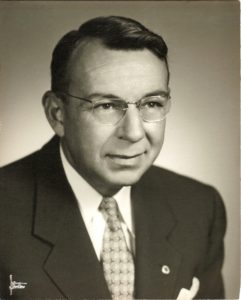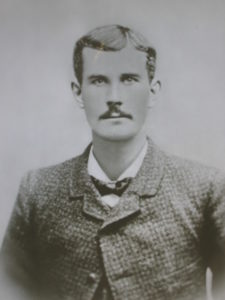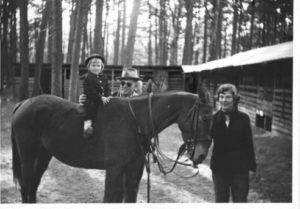An outline descendant chart is an example of what some Texans call “Aggie counting:” one, and another one, and another one, and another one … etc.
Likewise, the charts themselves are name/dates/spouse, name/dates/spouse, name/dates/spouse … etc., perhaps leavened occasionally with another fact or two. I dislike creating the dang things almost as much as I hate reading them. I’m just trying to be a good citizen by sharing what I know (or think I know) about this famous family. An incredible number of people claim to be their descendants. Maybe this will assist someone in locating an ancestor. Or perhaps it will be a dose of cold water. Who knows.
The prior post in this series (“Part 1 of n”) only included information for Adam and his four children – James Sr., William, Jeremiah, and Esther. Adam and Mary are obviously generation number 1 in that chart; their children are each number 2. We pick up in this post with the line of James Sr. and his wife Jean/Jane Campbell. I think James Sr. was a son of Mary Steele Alexander Rankin, although some researchers believe he was a son of a prior wife (for whom there is apparently no documentary evidence — please speak up if you have some!).
James Sr. and Jean/Jane had six children proved by his will: Esther, Ruth, William, Jeremiah, David, and James Jr.[1] I have not listed these children in birth order herein for obscure reasons of my own. The chart includes descendants of all of James Sr.’s children as far as I have tracked them toward the present, with the exception of their son James Jr. He is listed last and his descendants aren’t named (yet). That is because James Sr.’s son James Jr. is Spade’s line, and if I get it wrong, Spade will never let me hear the end of it. James Jr.’s descendants will appear in “Part 3 of n” when I gin up the nerve to publish it.
2 James Rankin Sr. and Jean/Jane Campbell, see Part 1 of n for more info on that couple.
3 Esther Rankin, 1762 – 1826, Franklin Co. Husband Samuel Smith. [2]
4 Mary Smith, b. by 1788.
3 Ruth Rankin m. John Tool.
3 William Rankin, b. ca 1748, d. ca 1800, Franklin Co., PA. Received half of his father’s 280-acre tract on Licking Cr. and devised that land to his only son James.[3] William married Anne Gillespie on 5 Nov 1771 in the Upper West Conococheague Presbyterian Church. Not surprisingly, he has been confused with other men having the same name, but the records about him are straightforward.
4 James Rankin, b. abt 1772-1776, Cumberland Co., PA. He was single in 1797 when William wrote his will. The last record I found for James was in an 1809 deed when he sold his father’s Franklin Co. land.[4]
4 Elizabeth Rankin m. Mr. Ritchie.
4 Jean Rankin, b. after 1776.
4 Ann Rankin, b. after 1776.
4 Ruth Rankin, b. after 1776.
4 Mary Gillespie Rankin, b. after 1776.
3 Jeremiah Rankin, b. ca 1752-1756, d. 1803. Jeremiah’s line is subject to controversy. One credible source says that James and Jean Campbell Rankin’s son Jeremiah was the man who married Mary Clark and died in 1803.[5] Two county history books claim that the Jeremiah who died in 1803 was a grandson of James and Jean. I come down on the side of the first argument, see the article at this link.
Jeremiah inherited half of his father’s 280-acre tract on Licking Cr. He was a revolutionary soldier. He built the allegedly haunted house in the area of Montgomery Township, Franklin County known as “the Corner.” His wife Mary Clark was a daughter of James Clark. Jeremiah’s 1803 will named his wife, only son James Clark Rankin, and daughters Nancy, Mariah, and Esther.[6]
4 James Clark Rankin, b. 1800, d. 1 Jun 1866.[7] Married Elizabeth Watson (1800 – 1871 or 1875) on 27 Mar 1828. He inherited the house in the Corner built by his father Jeremiah. His will names four children.[8]
5 Mary J. Rankin, b. abt 1831-32 d. 1860. Husband John C. McNary. Six children, all of whom died in infancy.[9]
5 Rebecca Vance Rankin, 1831-1865. She predeceased her father and was not mentioned in his will.[10]
5 Esther Rankin, 1838-1889.[11]
5 Samuel Johnston Rankin, 1833 – 1891, Montgomery Twp., Franklin.[12] Married Elizabeth H. Knox on 17 Mar 1868.
6 Elizabeth “Lizzie” Watson Rankin, 19 Nov 1868 – 22 Aug 1959. Lizzie apparently resided in the home which her great-grandfather Jeremiah had built. The house was allegedly haunted.[13] There is undoubtedly a good story out there if I can just persuade Gams, Spade, and Columbo to write it.
5 John Watson Rankin, b. abt 1836, d. 1872. Wife Mary (“Molly”) Dilworth.[14]
6 James Clark Rankin, 12 Jun 1868 – 8 Jan 1908. Attorney. [15] Attended the Upper West Conococheague Presbyterian Church. Wife Jenette Forster, 1866 – 1954.
7 Margaret Elder Rankin, 10 Nov 1898 – 15 Mar 1962. Husband Duffield W. Varden.[16]
6 Mary M. C. Knight Rankin, b. abt 1871.
5 Jeremiah C. Rankin, b. abt 1844-45.[17] No further information.
4 Nancy Rankin, b. 2 Feb 1796, Franklin Co., PA, d. 13 Jul 1883, Beaver Co., PA. Husband John Imbrie. Ten children.[18] Her tombstone identifies her as Nancy Clark Rankin Imbrie, wife of John.[19]
4 Mariah or Maria Rankin (Nancy Rankin Imbrie’s twin), b. 2 Feb 1796, Franklin Co.. Husband Samuel Johnston.[20]
4 Esther Rankin, 25 Jul 1802 – 19 Jun 1870. Married Alexander M. Johnston, lived in Mercersburg.[21]
3 David Rankin, d. Montgomery Twp., Franklin Co. abt. 1833.[22] David inherited part of the land where his parents lived. His wife was Mary (“Molly”), birth surname unknown. The Pennsylvania Archives confused this David with his first cousin David Rankin, son of William and Mary Huston Rankin.[23]
4 Molly Rankin m. Mr. Sellars.
5 Mary Elizabeth Sellars, b. by Jun 1829.
4 James Rankin, b. abt 1799-1800, d. 1879.[24] Wife Elizabeth, birth surname unknown.[25]
5 Elizabeth Rankin, b. abt 1829, m. Mr. Rhodes.[26]
6 Hannah E. Rhodes or Rhoades m. Mr. Zuck
6 David C. Rhodes or Rhoades.
5 Mary Rankin, b. July 1835.
5 David Rankin, b. abt 1833-34, d. 1882. Apparently never married. Left everything he owned to his brother J. Hervey Rankin, including land in Montgomery Twp. conveyed to the two brothers by their parents.[27]
5 Marion Rankin, b. abt 1836, d. bef. 1860.
5 Sarah Bell Rankin, b. abt. 1840, m. Mr. Hoffeditz. See Find-a-Grave memorial here.
5 James Henry or Harvey Rankin, 26 Dec. 1841 – 7 Jun 1915. Evidently never married.[28]
4 Betsy Rankin, born about 1795. Living with her brother James in 1850. Apparently never married.
3 James Rankin Jr. To be continued in Part 3 of n.
Whew! And that’s it for now. I will return to this chart after I publish one other article that has been running loose in my head.
See you on down the road.
Robin
* * * * * * *
[1] Franklin Co., PA Will Book A: 345, will of James Rankin Senior of Montgomery Township, Franklin, dated 25 Mar 1788 and proved 20 Oct 1795. The will names his wife Jean, daughter Ruth Tool and SIL Samuel Smith (whose wife was James’s daughter Esther Rankin), and sons David, William, Jeremiah, and James.
[2] Esther Rankin Smith’s memorial is in the Shannon Farm graveyard in Mercersburg. The Find-a-Grave memorial cites Franklin County Cemetery Records, Vol. 31, 5 for the information on the website. I cannot find a complete citation for this series, a location on the FHL website, or any other means of verifying the information. The only reference I can find to it is at Esther’s Find-a-Grave memorial.
[3] Franklin Co., PA Will Book B: 124, will of William Rankin of Montgomery Twp., Franklin Co., PA, dated 8 Feb 1797, proved 16 Feb 1802. Wife Ann. Son James, not married. Daughter Elizabeth Ritchie. Four daughters not of age: Jean, Ann, Ruth, and Mary Gillespie Rankin. Witnesses Jeremiah Rankin and David Rankin (who were the testator’s brothers). William’s 1797 will was not proved until 1802. However, an Ana Rankin — with the right census profile to be his widow and no adult male in the family — was listed as a head of household in 1800, perhaps indicating William was dead by then. See 1800 census, Montgomery Twp., Franklin Co., PA, Ana Rankin, 00100-02201.
[4] Franklin Co., PA Deed Book 8: 380, deed dated 29 Jun 1809 from James Rankin of Montgomery Twp. to James Buchanan. Deed recitals, in part: in 1771, James Rankin Sr. (s/o Adam) acquired 280 acres from Wm. Marshall. In his will, James Sr. left half to his son William. Then William, by will dated 8 Feb 1797, devised his realty to his son James Rankin, the grantor in the 1809 deed. James conveyed 125 acres plus 6% on Licking Creek.
[5] Virginia Shannon Fendrick, American Revolutionary Soldiers of Franklin County, Pennsylvania (Chambersburg, PA: Historical Works Committee of the Franklin County Chapter of the D.A.R., 1969) (copyright 1944) 180: “Jeremiah Rankin, Ranger on the Frontier, served in 1778, under Capt. John McConnell and as Ensign, 1780-81, with Captain Wm Huston; a son of pioneer James Rankin of Montgomery Township. He mar. Mary, dau. of James Clark. His will was dated June 1803 and prob. August 1803, only son James Clark Rankin and three daus.: Nancy; Mariah; Esther. The widow Mary later married Charles Kilgore. James, Jeremiah, David and William Rankin were pewholders in the “Lower Conococheague” or Welsh Run Church. Nancy Rankin mar. John Imbrie, Beaver Co., Penna., 10 children. Maria Rankin mar. Samuel Johnston, son of Thos. and Anne Houston Johnston. Esther Rankin mar. Alex. M. Johnston, son of Thos. and Anne Houston Johnston. Pennsylvania archives fifth series Vol 6 Pages 262, 269, 274, 282, 374.” RRW note: the pewholders James, Jeremiah, David, and William Rankin were the four sons of James Sr. and Jean Campbell Rankin.
[6] Franklin Co., PA Will Book B: 167, will of Jeremiah Rankin of Montgomery Twp. dated 13 Jun 1803, proved 1 Aug 1803. Wife Mary. Four minor children, all less than 18: son James Clark Rankin and daughters Nancy Rankin, Mariah Rankin and Esther Rankin. Mentions land in Ohio. Executors were his wife, brother James Rankin, brother-in-law James Clark, and brother-in-law David Humphreys. Witnesses John McFarland, David Rankin, John Rankin. Nancy and Mariah were twins, born in 1796. James Clark Rankin was b. 1800-01. Esther was b. 1802.
[7] 1850 census, Franklin Co., Montgomery Twp, James C. Rankin, 49, farmer, entire household b. PA, Elizabeth Rankin 49, Mary Rankin 19, Rebecca Rankin 17, Johnston Rankin 16, Watson Rankin 14, Jeremiah Rankin 5; 1860 census, Mercersburg, Montgomery Twp., entire household b. PA, James Rankin, 60, farmer, Eliz Rankin, 59, Mary Rankin, 28, Rebecca Rankin 26, S. J. Rankin (Samuel Johnston) 34 (sic), and Jeremiah Rankin, 16.
[8] Franklin Co., PA Will Book G: 162, will of James C. Rankin of Mercersburg dated 9 Jun 1865, proved 1 Jun 1866. Wife Elizabeth, sons S. J. (Samuel Johnston), J. W. (J. Watson), and Jeremiah C. Rankin. Daughter Mary Jane C. McNary of Washington Co., PA. Mentions the “Home Farm,” the Patterson Farm, the Shrader Farm, all in Montgomery Twp., plus a house in Mercersburg. He is buried in the Fairview Cemetery, Mercersburg, with the names of his wife and two of his daughters on the same monument.
[9] North American Family Histories, image available with an Ancestry subscription at this link.
[10] Rebecca Vance Rankin is buried in the Fairview Cemetery and shares a memorial with her parents and her sister Esther.
[11] Esther Rankin is also buried in the Fairview Cemetery and shares a memorial with her parents and sister Rebecca, see prior footnote.
[12] 1870 census, Montgomery Twp., Samuel J. Rankin, 36, farmer, $18,000/$2,600, Elizabeth Rankin, 30, Elizabeth Rankin, 1. 1880 census, Johnson Rankin, 46, farmer, wife Lizzie Rankin, 36, daughter Lizzie Rankin, 12, and niece Elizabeth Rankin, 6. Samuel J. and Elizabeth Knox Rankin have a shared monument in the Fairview Cemetery in Mercersburg.
[13] See PA death certificate for Elizabeth Watson Rankin, File No. 74957. Resided Mercersburg, PA, Rt #1, Montgomery Twp. Identifies her as a daughter of Samuel J. Rankin and Elizabeth Knox. Born 11/19/1868 in Mercersburg. Died 22 Aug, 1959. Never married.
[14] 1870 census, Franklin, Montgomery Twp., J. Watson Rankin, 34, b. PA, Molly D. Rankin, 25, PA, James C. Rankin, 1. Franklin Will Book G: 549, will of J. Watson Rankin dated 27 Feb 1872 proved 1 Apr 1872. Wife Mary D. Rankin, children James Clark Rankin and Mary M. C. Knight, both children under 21.
[15] 1900 census, Montgomery Twp., Franklin Co., James Rankin, b. Jun 1868, PA, parents b. PA. Lawyer. Wife Jennette, b. Aug 1868. Married 3 years, one child living. Daughter Margaret Rankin, b. Nov. 1898. James C. and wife Jenette are buried in the Fairview Cemetery, see memorial here.
[16] Margaret E. Rankin was baptized 21 Apr 1899 in the Presbyterian Church of the Upper West Conococheague in Franklin Co. The church record identifies her parents as James C. Rankin and Janette Forster, image available here. See also PA Death Certificate for Margaret E. Varden, which identifies her as a daughter of J. Clark Rankin and Jennette Forster. Born 10 Nov 1898, d. 15 Mar. 1962. Spouse identified as Duffield W. Varden. Image available at this link with an Ancestry subscription.
[17] 1870 census, Mercersburg, Franklin Co., Elizabeth Rankin, 69, and Jeremiah C. Rankin, 24, reaping machine agent.
[18] For the names of John and Nancy Rankin Embrie’s 10 children, see a compiled history of the Embrie family at this link. Requires an Ancestry subscription.
[19] 1850 census, Beaver Co., PA, household of John Imbrie, 54, Nancy Imbrie 52, DeLorma (m) 26, Mary 24, Nancy F. 22, Robert S. 21, John 14, Euphanus M. (f) 17, Jeremiah 11, and David 9, all b. PA. You can find Nancy’s Find-a-Grave memorial at this link.
[20] 1850 census, Montgomery Twp., Franklin Co., PA, household of Samuel Johnston, 58, farmer, Maria Johnston, 54, Ann Johnston 23, and J. Rankin Johnston, 14. The same family is listed in the 1860 census for Montgomery Twp., Franklin. The younger child was Jeremiah Rankin Johnston, a minister. He moved to Washington Co., PA, where he can be found in the 1870 and 1880 census.
[21] Esther Rankin Johnston is buried in the Fairview Cemetery in Mercersburg, see memorial here.
[22] Franklin Co., PA Will Book D:250, will of David Rankin of Montgomery Twp. dated 6 Jun 1829 proved 22 Jan 1833. Wife Molly, children James and Betsy, granddaughter Mary Elizabeth Sellars, only child of daughter Molly. Executor Andrew B. Rankin. 1830 census, David Rankin in Montgomery Twp is listed adj Jacob Kline and James Rankin. Jacob Kline was mentioned in a deed recorded in Franklin Deed Book 16: 507 conveying land adjacent James Rankin.
[23] See an article about the David Rankin confusion here.
[24] Franklin Co., PA Will Book H: 578, will of James Rankin of Montgomery Twp. dated 24 Jul 1872, proved 10 Apr 1879. Wife Elizabeth, life estate in land, remainder to daughter Mary in fee simple. Daughters Elizabeth Rhoads and Sarah Bell Hoffeditz, cash. Mentions deeds to sons David and James Henry for “mansion farm and a tract of Mountain land.” Witnessed by S. J. Rankin. The witness was probably Samuel Johnson Rankin, son of James Clark and Elizabeth Watson Rankin.
[25] 1830 census (00001-10001) lists James Rankin in Montgomery Twp. adj his father David. The 1840 census has a family that fits the profile of David’s son James adj. Mr. Cline. He is identified as James C. Rankin, although the middle initial may not be correct. See 1850 census, Montgomery Twp, James Rankin, 51, $3,000, b. PA, Elizabeth Rankin 39, Elizabeth Rankin 21, Mary Rankin 18, David Rankin 17, Marion Rankin (fem) 14, James Rankin 8, Elizabeth Rankin 55 (undoubtedly his sister because she has $1500), and John Watson. 1860 census, Montgomery Twp, James Rankin, 61, Elizabeth Rankin 48, Mary Rankin 25, David Rankin 23, Sarah Rankin 20, and Harvey Rankin, 18; 1880 census, Montgomery Twp., Elizabeth Rankin, 70, daughter Mary 48, son David 46, son Harvey, and John Watson, 49.
[26] Elizabeth Rankin Rhodes/Rhoades had two children identified in an acknowledgement by heirs in Franklin DB 69: 49.
[27] Franklin DB 52: 299. Franklin Will Book I: 434, will of David Rankin dated 13 May 1882 proved 16 Nov 1882, J. Harvey Rankin sole beneficiary and executor.
[28] 1900 census, Mercersburg, Franklin Co., Harvey J. Rankin, 53, b. Dec 1846, single. Landlord. With sister Mary W. Rankin, b. Jul 1835.






